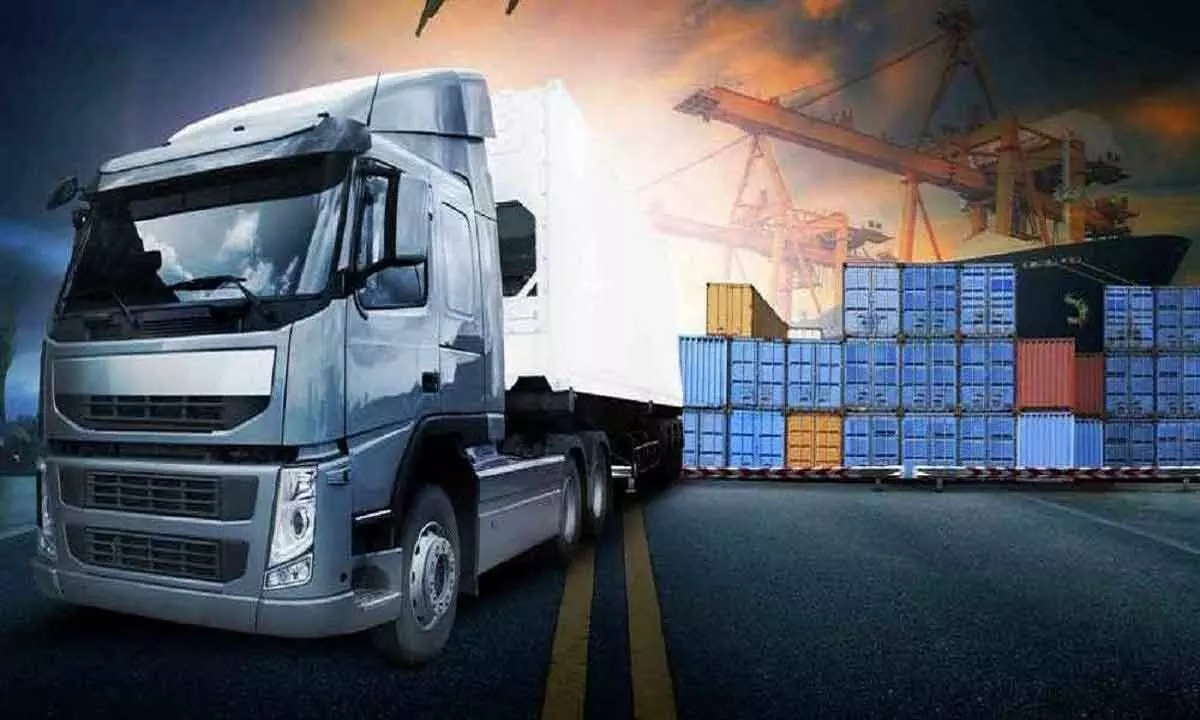Booming e-commerce set the pace for country’s logistics industry

The logistics industry are making a significant shift toward digitisation and automation by adopting technologies such as internet of things (IoT), Artificial Intelligence (AI), machine learning and robotics to streamline operations, improving efficiency and reduce cost. This includes warehouse automation, autonomous vehicles, predictive analysis, and others
The global logistics market size was accounted for $ 7.98 trillion in 2022. This is expected to be worth around $ 18.23 trillion by 2030 with a noteworthy CAGR of 10.7% from 2023 to 2030.
One of the key factors that is positively influencing the market is the booming e-commerce industry, backed by availability of high-speed network connectivity. The need for effective logistics services is rising as the e-commerce industry grows. Furthermore, the market is being driven by a shift in customer preference toward online purchases.
Online retail networks provide convenient home delivery facilities, which aid in market expansion. Aside from that, manufacturers are aiming for green logistics solutions to diminish environmental impact as well as improve their business’s green credentials. Nowadays, the logistics industry is experiencing a significant shift toward digitisation and automation. Logistic companies are increasingly adopting technologies such as internet of things (IoT), Artificial Intelligence (AI), machine learning and robotics to streamline operations, improving efficiency and reduce cost. This includes warehouse automation, autonomous vehicles, predictive analysis, and others.
Waterways transportation is also called as inland waterways transportation and it refers to movement of goods and passenger through rivers, canals, lakes, and coastal waters. Water transport is generally cost- effective and comes in handy when transporting large volume of goods over a long distance and it has high carrying capacity. Hence, the demand for water transportation is increasing. Such factors are driving the growth of global logistics market in the forecast period.
Logistics provides numerous benefits, including improved delivery performance, lower operational costs, and higher levels of customer satisfaction. As a result, many manufacturers and retailers around the world consider it a critical aspect of their business. Additionally, it contributes to an organisation’s competitiveness in terms of flexibility, delivery, quality, and cost.
Globalisation is a new factor driving market growth, with many multinational corporations outsourcing logistics results. Furthermore, logistics enables organisations to separate different stages of a manufacturing process across multiple countries. It reduces the total cost of manufacturing.
In their bid to boost profitability and viability, transportation and logistics companies around the world are concentrating on improving supply chain efficiency. Common governance guidelines are necessary for the logistics sector.
For better understanding, based on the end use, the logistics market is divided into healthcare, manufacturing, aerospace, telecommunication, government and public utilities, banking and financial services, retail, media and entertainment, technology, trade and transportation and other end uses.
It is expected that the manufacturing segment will dominate market for logistics. Demand for industrial manufacturing services is increasing, leading to the segment’s anticipated expansion. Numerous businesses had already turned to local suppliers to preserve cost-effective manufacturing. Quality and customer happiness remain top priorities, despite efforts to cut production costs. Keeping the right inventory on hand for quick production rates requires logistics management and cost reduction.
On the other hand, the retail category is anticipated to be the fastest growing category in the logistics market. Rapid growth is being seen in the retail industry. Retail e-commerce last-mile delivery solutions are anticipated to boost the retail logistics sector. Consumers compare items based on delivery time, costs, specifications, features, and compatibility needs from numerous internet sources, which is a disadvantage for wholesalers or brick-and-mortar businesses. These advantages over physical stores are pushing the retail e-commerce industry ahead, and this trend is projected to continue in the years to come.
Asia Pacific, which has dominated the market, is anticipated to grow at the fastest rate over the forecast period. Rising e-commerce tendencies and a region that is becoming more reliant on it are driving the market’s growth. Furthermore, the area is spending money on logistics-related research and development. The region’s potential infrastructure and labour pool also present a significant opportunity to grow this sector. Its logistics market is expanding due to rising demand for exports, imports, and in-country logistics to carry out efficient deliveries.
For instance, the Indian logistics market is expanding at the fastest rate in the sector, despite the industry’s overall $160 billion market and 22 million people. India is also well-known for its current concentration on development projects and infrastructure growth. Furthermore, the country is going through a digital transition, which would probably alter the market’s picture. Asia Pacific region is expected to experience the fastest growth over the projected 2023–2030.
The lack of government involvement and the absence of regional organisations, that may actively launch and coordinate global logistics standardisation activities, have hampered the level of logistics standardisation in European nations like the United Kingdom, Germany, and France. Every vendor is able to offer the majority of solutions in one package due to the common standardization in logistics management.














